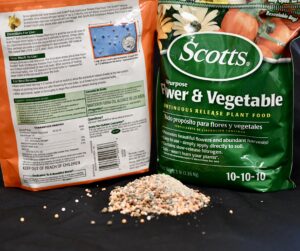Choosing the Right Lawn Grass
go.ncsu.edu/readext?991607
en Español / em Português
El inglés es el idioma de control de esta página. En la medida en que haya algún conflicto entre la traducción al inglés y la traducción, el inglés prevalece.
Al hacer clic en el enlace de traducción se activa un servicio de traducción gratuito para convertir la página al español. Al igual que con cualquier traducción por Internet, la conversión no es sensible al contexto y puede que no traduzca el texto en su significado original. NC State Extension no garantiza la exactitud del texto traducido. Por favor, tenga en cuenta que algunas aplicaciones y/o servicios pueden no funcionar como se espera cuando se traducen.
Português
Inglês é o idioma de controle desta página. Na medida que haja algum conflito entre o texto original em Inglês e a tradução, o Inglês prevalece.
Ao clicar no link de tradução, um serviço gratuito de tradução será ativado para converter a página para o Português. Como em qualquer tradução pela internet, a conversão não é sensivel ao contexto e pode não ocorrer a tradução para o significado orginal. O serviço de Extensão da Carolina do Norte (NC State Extension) não garante a exatidão do texto traduzido. Por favor, observe que algumas funções ou serviços podem não funcionar como esperado após a tradução.
English
English is the controlling language of this page. To the extent there is any conflict between the English text and the translation, English controls.
Clicking on the translation link activates a free translation service to convert the page to Spanish. As with any Internet translation, the conversion is not context-sensitive and may not translate the text to its original meaning. NC State Extension does not guarantee the accuracy of the translated text. Please note that some applications and/or services may not function as expected when translated.
Collapse ▲Pamlico Extension has received numerous inquiries this past month in regards to lawn choices for our local landscape. To help address this question, I will provide several important concepts to help readers make informed decisions to improve their turfgrass selection.
- Lawn grass (turf) needs sunlight, water, and sufficient fertility to grow. Eight hours of direct sunlight is needed to maximize turf growth potential. Turfgrass will grow in shadier areas, but will never be as competitive as turf in full sunlight. Water is essential to growth, but extremes of excess or drought will limit the spread of turfgrass and create issues from disease and dieback. An inch of water per week is the recommended rate during active growth periods, but turfgrass varieties are quite hardy and can tolerate a little more or less. Sandy soils will dry out quicker than soils that contain more organic matter, and will often benefit from supplemental irrigation during summer heat. Soil fertility is important to healthy turf as sufficient nutrients sustain season long growth and help resist environmental stress. Soil sampling to ensure proper soil pH and adequate fertility is recommended before selecting a new turfgrass species for your lawn. Centipedegrass is a common turf type in Pamlico County, but grows best at a pH value near 5.5. Soils containing a higher pH value (> 6.0) would be a poor choice for centipedegrass, as lowering soil pH in Pamlico County can be difficult (soil with naturally higher pH ranges often contain shell fragments, which raises pH). Soil testing materials are available in the Pamlico County Extension office for submission to North Carolina Department of Agriculture soil lab.
- Warm season turf species are best adapted to grow in Pamlico County. Recommended warm season turf species include Bermudagrass, Zoysiagrass, St. Augustine grass, and Centipedegrass. Only centipede, zoysia, and common bermuda can be seeded. Improved bermudagrass hybrids and St. Augustine must be planted vegetatively through sprigs, plugs, and sod. Warm season grasses grow best in our warm and humid climate, producing green growth during spring, summer, fall, and turning brown (dormancy) during the cold winter. Warm season grasses also spread by runners (stolons and rhizomes) that creep along the ground sending up new foliage. To produce a healthy lawn, the objective is to encourage the spread of runners across all open spaces.
- Seeding grass takes preparation, irrigation, heat, and TIME. If you wish to seed a new lawn or fill in a bare area, fulfill all the of the requirements we have previously discussed. Then prepare the soil to accept seed to optimize germination. This is best achieved by eliminating all competing vegetation including weeds and undesirable turfgrass. Grass seed must be in contact with soil to survive past germination. If seed is scattered on top of competing vegetation, most of this seed will die. If you are attempting to improve an existing stand of turf with additional seed, then mow the turf as low as possible before seeding and rake seed into the turf following application. Consistent moisture is important to germination and must be present during the entire germination period. Germination may require as much as 28 days to occur, but consistent moisture and sufficient warmth will expedite this process. Warm season turf grass should not be seeded until late March and no later than late August. This will help to provide sufficient warmth for germination and allow enough growth to prevent winter injury.
- Lastly, manage weeds and other pests. Weeds are the greatest competitor to newly seeded lawns. There are numerous herbicides available to control weeds in turfgrass but not all can be applied to recently seeded turf. Be especially careful not to apply preemergence herbicides before or after seeding. Most preemergence herbicides available to homeowners act by preventing rooting and should be avoided during the first growing season. Postemergence products are available but many require several weeks of new growth before they can be applied.
To learn more about the different turf types and their care and management, review the “Carolina Lawns Guide to Maintaining Quality Turf”. You may also contact Daniel Simpson at 252-745-4121 or Daniel_simpson@ncsu.edu for more information.





